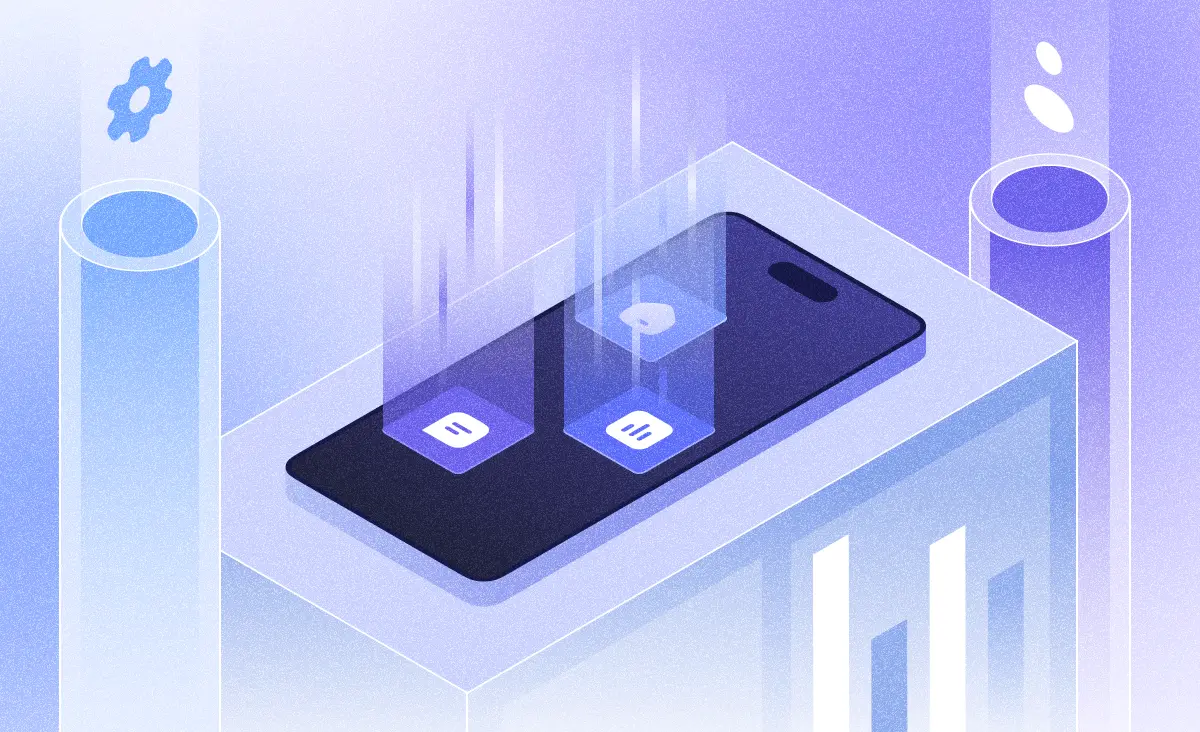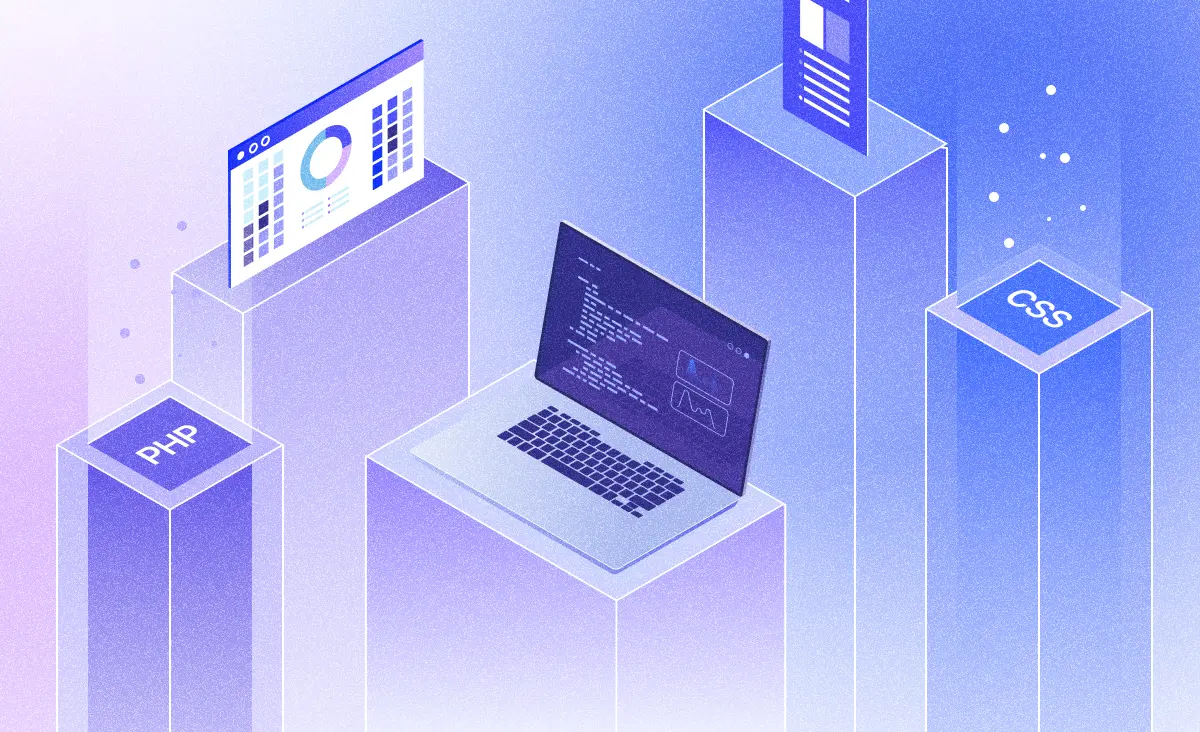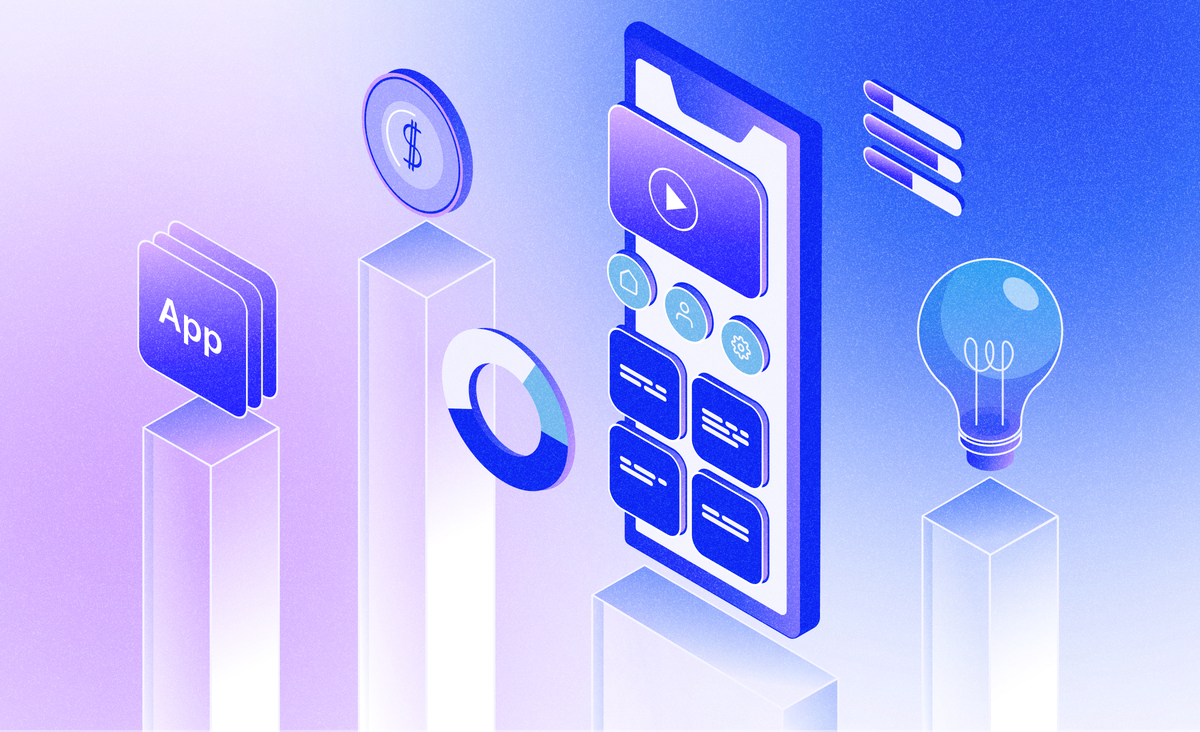In the world fueled by continuous technological innovation, app development has taken a central role. With an average of 30-38 new applications hitting the Apple App Store every month in 2022-2023, it’s clear that businesses across the globe are leveraging both mobile and web apps to improve their connection with customers.

In today’s digital-first landscape, a strong online presence isn’t just a bonus, it’s mandatory. The core component of this presence is app development, a complex process that requires a solid understanding of various factors including the cost. It’s important for entrepreneurs to grasp the app development cost to determine the feasibility of projects.
This guide aims to unravel the mystery of app development cost, providing a comprehensive look at the costs of each stage, key factors impacting the total price, and real-world examples of mobile apps and their cost breakdown. If you already have an app idea that you need to estimate, contact us for an independent App Development Cost Estimate.
What affects app development cost at each project stage?
To fully grasp the intricacies of the app development cost, it is crucial to understand how the different stages of app development contribute to the final price tag. The costs vary significantly from one development phase to another and below are the key stages that influence the app development cost.
Also, the review website Clutch conducted a study among entrepreneurs to understand the cost of each stage of development. We have gathered key findings from this research and presented them in the descriptions of app development stages.
Discovery phase
The discovery phase typically involves market research, competitor analysis, and defining the target audience. This stage sets the foundation for the forthcoming steps and dictates the direction your app development should take. Costs in this stage can be influenced by the depth of the research required and the tools used to conduct it.

UI/UX design
The UI/UX design stage involves the creation of the user interface and overall user experience of the app. The costs here will depend largely on the complexity of the design, the amount of custom graphics and branding elements required, and the overall intricacy of the user interaction.

Development: coding and building app infrastructure
This is often the bulk of the project where the application’s coding and architecture are built. The app development cost at this stage largely depends on factors such as the chosen tech stack, complexity of features, and the development method like native, hybrid, or web.
Testing and quality assurance
Testing comes next and involves checking the application for any bugs or issues. The type of testing, the number of test cases, and the complexity of the app are some of the factors that influence the cost at this stage. By the way, comprehensive testing also affects how long the release to the store will take. The better is the app performance, the quicker the app will be accepted and added to Google Play and App Store.

Release to the store
The next stage is getting the app onto the respective app stores, and this involves a one-time fee for the Apple App Store and Google Play Store. Besides that, the description, media assets, and the rating also factor into the app development cost at this stage.
Post-release maintenance
Lastly, the post-release maintenance stage involves providing updates, fixing bugs, server costs, legal support, and customer service. The cost of this stage typically depends on the number of active users and the frequency of the updates to be released.
Receive the app price estimate and feel unsure about it? Let our team provide you with an independent assessment. Fill in the form for a second opinion that you can trust.

Other factors that influence app development cost
While the stages of app development play a significant role in determining the final app development cost, several other considerations can also substantially sway the price. The scope of your application, the platforms it caters to, and even the geographic location of your chosen IT agency can all influence your budget. Here’s how:
App Complexity
Essentially, the more complex your app, the higher the app development cost will be. Complex apps require more time and expertise to develop while also necessitating the use of advanced technologies. Does your application require a simple or complex UI/UX? Are there any integrations with third-party services needed? Will your app need a backend server or leverage APIs? The answers to these questions can help estimate the complexity of your app, and by extension, its cost. Let’s have a look at the table provided by Goodfirms. Here we can find out how app complexity can be connected with development timeline and cost.
| Mobile App Complexity | Features Included | Time Taken (in hours) | Cost For Economic Project (at $60 per hour) | Cost for High-end Project (at $122 per hour) |
| Simple App | Basic User Features & App Admin | 240 - 560 | $12,960 to $30,240 | $29,280 - $68,320 |
| Complex App | Complex + Basic User Features & App Admin | 640 - 1120 | $34,560 to $60,480 | $78,080 - $136640 |
| Advanced App | Advanced + Complex + Basic User Features & App Admin | 1040 - 1520 | $56,160 to $82,080 | $126,880 - $185,440 |
Number of Platforms and Devices
The number of platforms (iOS, Android, Web) and devices (smartphones, tablets, wearables) your app is designed for can also impact the cost. Developing for multiple platforms or device types can increase the time and resources needed, thus raising the cost. For instance, an app that operates on both iOS and Android and across different devices, necessitates additional compatibility considerations and QA time. Here is the table provided by Upwork. It comprises the hourly rates of different types of developers.
| Type of developer | Hourly rate |
| iOS developer | $45-75 |
| Android developer | $25-85+ |
| React Native developer | $25-70 |
| Xamarin developer | $25-50+ |
Geography of the IT Agency
The cost of living and the standard hourly rate for developers in the location of your IT agency can considerably affect your project’s cost. Typically, North American and Western European agencies charge higher rates due to the high cost of living in those regions, followed by the agencies in Eastern Europe and South America. Meanwhile, IT agencies in Asia often provide the most economical rates.
By understanding how these factors impact app development cost, you can make informed choices and better plan your project budget. It’s crucial to remember that while cost-saving is essential, the quality of the developed app should remain the priority, which, in the long run, is the secret sauce to a successful app in a competitive marketplace. Let’s have a look at the table provided by Goodfirms that shows how much developers from different regions charge.
| Region | iOS (Avg. $/Hr) | Android (Avg. $/Hr) | Cross-Platform (Avg. $/Hr) |
| Canada | 90 - 120 | 80 - 140 | 90 - 120 |
| The USA | 60 - 120 | 60 - 120 | 60 - 130 |
| Latin America | 28 - 90 | 28 - 90 | 40 - 160 |
| The UK | 60 - 75 | 60 - 75 | 55 - 75 |
| Europe | 35 - 55 | 35 - 55 | 30 - 50 |
| Ukraine | 40 - 78 | 38 - 60 | 40 - 78 |
| South Africa | 45 - 80 | 40 - 80 | 40 - 80 |
| India | 22 - 90 | 15 - 25 | 20 - 30 |
| Southeast Asia | 23 - 55 | 30 - 45 | 30 - 45 |
| Asia | 25 - 35 | 20 - 30 | 25 - 35 |
| Australia | 90 - 120 | 100 - 120 | 90 - 120 |
A few tips on how to reduce the app development cost
Balancing the quality of your app and the development cost can be quite the juggling act. However, there are several strategies that you can employ to ensure you get the best value for your investment:
Detailed planning
Preparing a detailed plan even before contacting the developers can help curb the app development cost. Be clear about your business requirements, target audience, and the features you want in your app. This will reduce the back-and-forths, minimize revisions, and save on costs.
Use an MVP development approach
Starting with a Minimum Viable Product (MVP) helps you test the waters without heavy investment. An MVP has the core functionalities necessary for your app idea. It allows you to gather real user feedback and ensure your concept works before investing more in added features and refinements.
Try cross-Platform Development
Developing a cross-platform application that runs on multiple platforms (like iOS and Android) simultaneously can reduce costs when compared to native app development which caters to each platform individually.
Outsourcing
Consider leveraging offshore or nearshore development teams to take advantage of competitive pricing, while also tapping into a diverse pool of talent. Remember to choose a reputable agency that matches your needs to ensure the quality isn’t compromised.
Regular Maintenance and Upgrades
While it may seem counterintuitive, investing in regular maintenance and upgrades can significantly cut costs in the long run. Doing so helps you avoid costly repairs or a complete rebuild that might be required if problems are left undetected or unattended for too long.
When implemented correctly, these strategies can help you significantly cut down the app development cost while maintaining a high-quality output. Additionally, remember that understanding the app development process, taking time to choose the right development team, and actively participating in the development process can also help you manage the costs without compromising on quality.
World-known apps: their app development cost and timeline estimate
A perspective on the costs and timelines involved in creating world-renowned applications can offer a clearer understanding of the app development process and its associated expenses. Here, we present an in-depth analysis of the costs and timelines for developing some of the world’s most popular apps such as Instagram, Tinder, Uber, and WhatsApp. The estimate below is provided by research run by Goodfirms.
Tinder
An influential player in the dating app world, Tinder’s simple swipe-based matchmaking system has revolutionized online dating, boasting over 50 million users worldwide and leading to an estimated one million dates per week.
This popular dating app provides its users with features including Facebook/Phone Number Login, user profile management, geolocation, search functionality based on filters, swipe features to like or reject profiles, match feature, unlimited chatting, video chat, personal security, block users, and expanding matches to different locations. The average cost to develop a Tinder-like app hovers around $102,688 with an estimated timeline of 10 months.
A strong leader in instant messaging, WhatsApp’s user-friendly features and strong focus on security have earned it over 2 billion users globally, firmly cementing its status as the most used messaging app worldwide.
Renowned for its secure messaging platform, WhatsApp offers features like simple messaging, group chat, voice and video calls, WhatsApp on the web and desktop, status uploads, end-to-end encryption for security, instant photo and video sharing, and easy document sharing. The average app development cost sits at approximately $184,512 with an average timeline estimate of around 12 months.
A pioneering platform for sharing photos and videos, Instagram’s creative filters, interactive stories, and live feed features have led to 1 billion active monthly users and over 500 million daily users.
Instagram has revolutionized the social media landscape with features like Sign Up/Login and Manage User Profile, Home page with Live Feed, Search People, Follow People, Add Photos/Videos with descriptions, Share Photo/Video via chat, reels, stories, various filters, Live Video Feature, and IGTV. The cost to develop an app like Instagram averages at $143,728 with an estimated development timeline of 13 months.
Uber
A progressive trailblazer in the ride-sharing industry, Uber’s intuitive design and fair pricing system have made it the go-to service in over 10,000 cities, with more than 5 billion rides completed worldwide.
Uber has redefined urban transport with its extensive list of features including Sign Up / Login and Manage your Profile, real-time ride tracking for others, multiple drop-off points, ride rating and review, multiple payment options, scheduled rides, calendar shortcuts, intuitive user interface, real-time tracking of drivers, driver preference, as well as call and chat options. The development of an Uber-like app typically costs around $152,776 with an estimated timeline of about 13 months.
| App name | Timeline estimate | App development cost estimate |
| Tinder | 10 months | $102,688 |
| 12 months | $184,512 | |
| 13 months | $143,728 | |
| Uber | 13 months | $152,776 |
These estimations, while providing a reference, may vary based on the chosen developer rates, additional features, and the complexity of the project. Nonetheless, they serve as a ballpark figure, revealing the substantial investment required for creating world-class apps with high functionality and excellent user experience.
Wrapping up
In conclusion, understanding the app development cost involves much more than just looking at the numbers. It requires an in-depth comprehension of the various stages involved in the process, the complexity of the app, the platforms it will cater to, and even the location of your chosen IT agency.
While the costs to develop apps like Tinder, WhatsApp, Instagram, or Uber may seem steep, remember that these platforms have become world leaders in their respective markets, demonstrating that an investment in a well-designed, highly functional app can yield significant returns.



